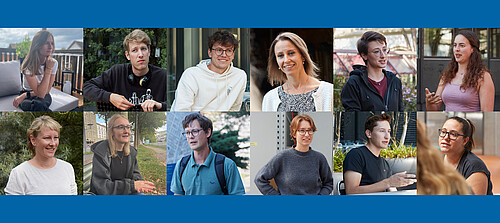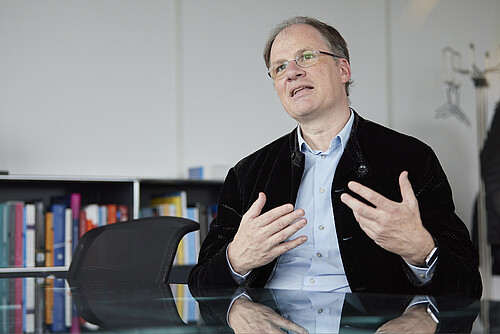
An agile approach to studying: eduScrum – achieving success as a team
What was once a term only known to die-hard rugby fans is now a standard approach in the IT sector – Scrum. In this context, it doesn’t refer to two sets of forwards packing down together on a rugby field, but rather an agile working method that is now also being picked up on by the fields of teaching and science.
Whether it’s in rugby, IT or teaching, good teamwork pays off. And it is for this reason that working with Scrum has become an established method in the realm of IT since the early 1990s. As an agile working model, it primarily helps to provide teams with a structure that enables them to organise long-term or large projects in an optimal manner. With eduScrum, this agile way of working in the IT industry is now being transported to the education sector. Here, students learn how to tackle projects in a target-oriented fashion and work in an agile environment.
Once the teams have been formed, the students receive a project from their lecturers in the form of a goal, a product or a problem. How the teams realise the project, however, is left down to them. “First, the teams need to think about what they already know, what they don’t know yet and where they can acquire this knowledge. They therefore have to think for themselves about how they want to solve the given problem and achieve objectives. This gives the students more freedom, but also more responsibility,” explains Miriam Fischer, Digital Education Officer at the ZHAW School of Life Sciences and Facility Management. As part of their project work, the teams have to work in accordance with the eduScrum framework, i.e. define work steps and assign tasks.

“I have always found that the teams very much appreciate this space for development and are also more motivated in performing their work as a result.”
To this end, a team captain is appointed in advance for every work step. Just like in rugby, the team captain’s job revolves around communication. They take on an organisational-communicative role and arrange deadlines, chair meetings and keep the team up to date. However, decisions are always made together.
From teacher to coach
For the lecturers too, eduScrum entails changes and demands agility. They have to get involved with the teams and their individual approach so as to be able to help them. This sees a shift in the level of cooperation, with the lecturers acting more as coaches and accompanying the students rather than leading them. Thanks to transparent performance recording and an up-to-date digital overview, they can monitor the teams’ progress and identify any stumbling blocks. During consultation hours, they are then able to offer the teams targeted input or provide them with materials. Nevertheless, the teams are essentially self-organised. “As a coach, I accompany the teams and offer them support should questions or problems arise. I have always found that the teams very much appreciate this space for development and are also more motivated in performing their work as a result,” says Fisher.
21st century skills
When working with eduScrum, it is not only professional competencies that are promoted, but also personal skills. As the working world of the future becomes ever more complex and interconnected, these skill sets will become more and more important. Students are being prepared for this with the help of eduScrum by strengthening their so-called 21st century skills, including communication, collaboration, creativity and critical thinking. Whether as a team captain or member: Students learn to take on a wide range of roles, to organise themselves both as and within a team as well as to work together in a solution-oriented manner. “During the projects, students often realise where their strengths lie and where they need to catch up. It is here that we as coaches can come in and offer them targeted support and encouragement,” explains Fischer.
Researching with Scrum
Agile working methods are not just limited to the fields of IT or teaching. Methods such as Scrum and eduScrum are popular and are already used in various industries, sectors and companies. “Research projects can also be conducted with eduScrum,” says Fischer in answering whether there are other possible areas where the approach can be applied at the ZHAW. Complex and long-term projects with several people involved are particularly suitable. Nevertheless, the same credo applies to both research and teaching: The researchers and lecturers are allowed to decide for themselves whether they want to put together their project or lessons according to Scrum principles. Miriam Fischer has tried it out and is enthusiastic about the approach: “I am looking into many new didactic methods and came across eduScrum. Working with this approach has been a lot of fun for both me and my colleagues and it has impressed me.”



0 Comments
Be the First to Comment!